Fashion at Versailles: Her
Palace of Versailles has partnered up with the Google Cultural Institute through its international project in bringing two virtual exhibitions: Fashion at Versailles: Her and Fashion at Versailles: Him.
Fashion at Versailles, the project continues to inspire notable contemporary designers offering a decryption to the trends emerged in 1780s, back to the era of Louis XVI and Marie Antoinette. Béatrice Sarrazin, Yves Carlier, Géraldine Bidault, and Vincent Bastien curated the exhibition digitally from paintings to photographs around the iconic figure of Marie Antoinette.
Changes in fashion the French Court were exceptional in the history of clothing. Countrywomen and middle-class women would wear a shirt under a corset, a short skirt one petticoats, a fichu on the shoulder, a bonnet, and flat leather shoes.
• CHAPTER 1. The main fashion trends in the 1780s
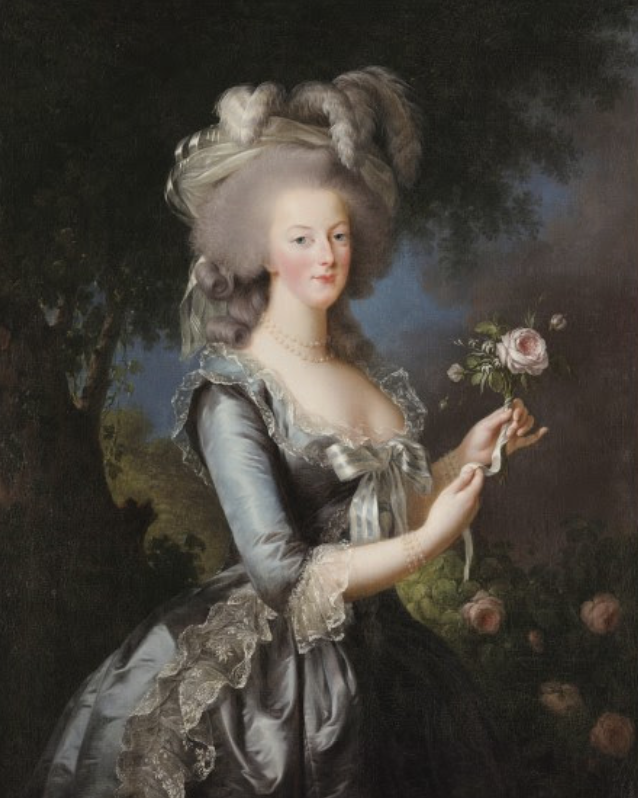
Elegance and simplicity of clothing was the order at Court during Marie Antoinette’s era. Robe à la polonaise was the everyday fashion for women. It is a modest outfit with a modifiable dress that can be easily adjusted. The specific feature of the dress is the single piece bodice with the double skirt. This look was fashionable during the reign of Louis XVI.
• CHAPTER 2. Appear at Court
In 1775, Marie Antoinette hosted several resplendent celebrations in Trianon garden, during which it was crucial to have the right dress code.
Grand habit de cour worn by women was composed of a manteau adorned with ermine on the inside and a wide satin or silk skirt with a panier that was decorated with ribbon, flowers, and beads.
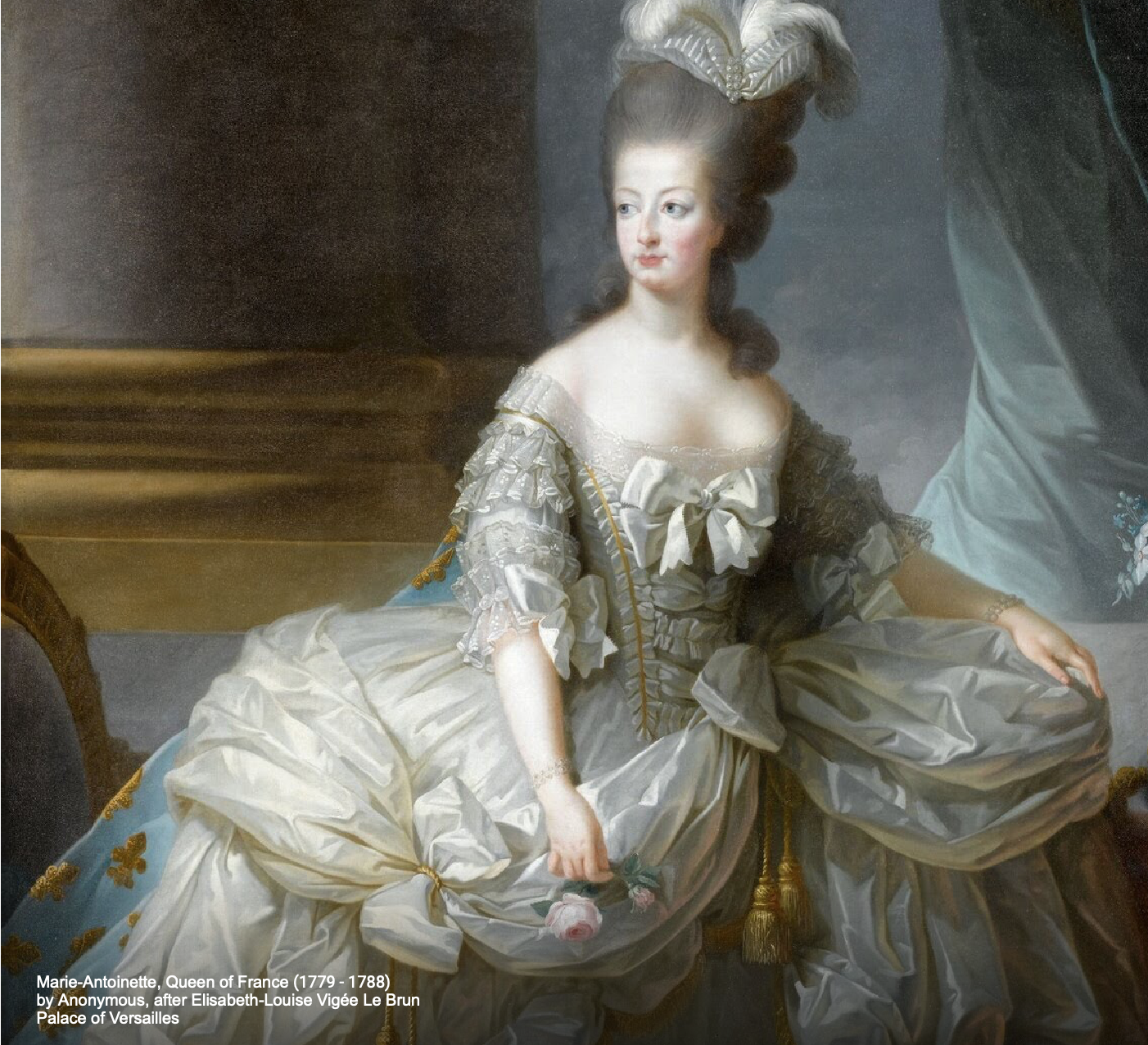
Habit de cour was traditionally the robe à la française. It was a formal gown with paniers worn for the theatre and balls. Usually gowns with paniers would be decorated with frills, beads and precious stones. During the reign of Louis XVI, the two paniers spread outwards as this style was known as the panier à coudes. The skirt here was decorated with sable tails, blue satin bands, and lace.
The hairstyle of this period was named as pouf. The hair was curled on either side of the face and topped with a cloth hat with ribbon. For an extravagant pouf, it was a high hairstyle comprising a piece of gauze and false hair and often adorned with accessories, which was called as pouf à. la Belle Poule or pouf à la Montgolfière.
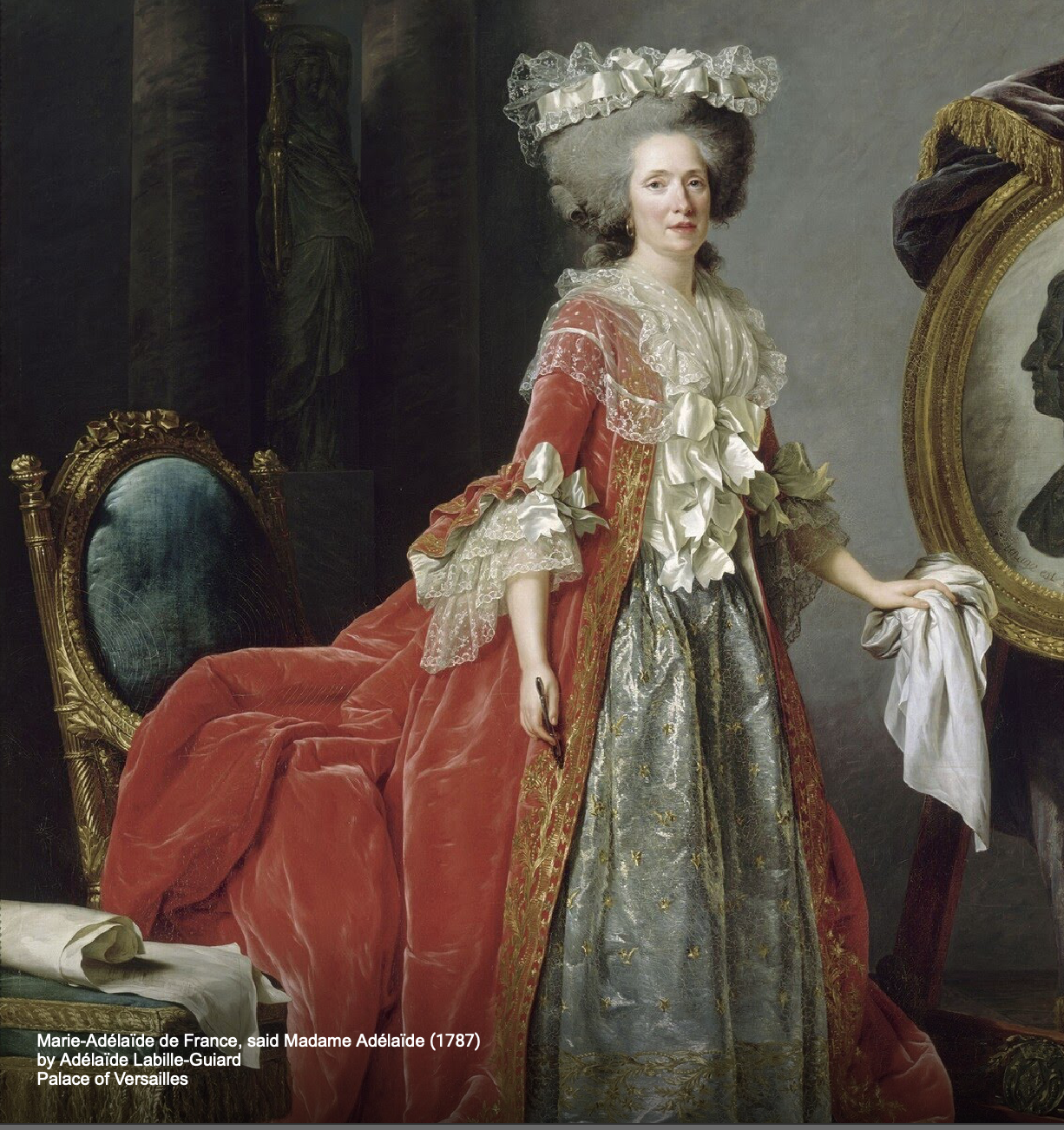
Hunting attire was one the notable fashion during the era. For convenience reason, the attire adopted male clothing or a redingote with a tiered collar. The Queen herself was seen hunting and riding astride with tight fitting breeches that were worn under a skirt.
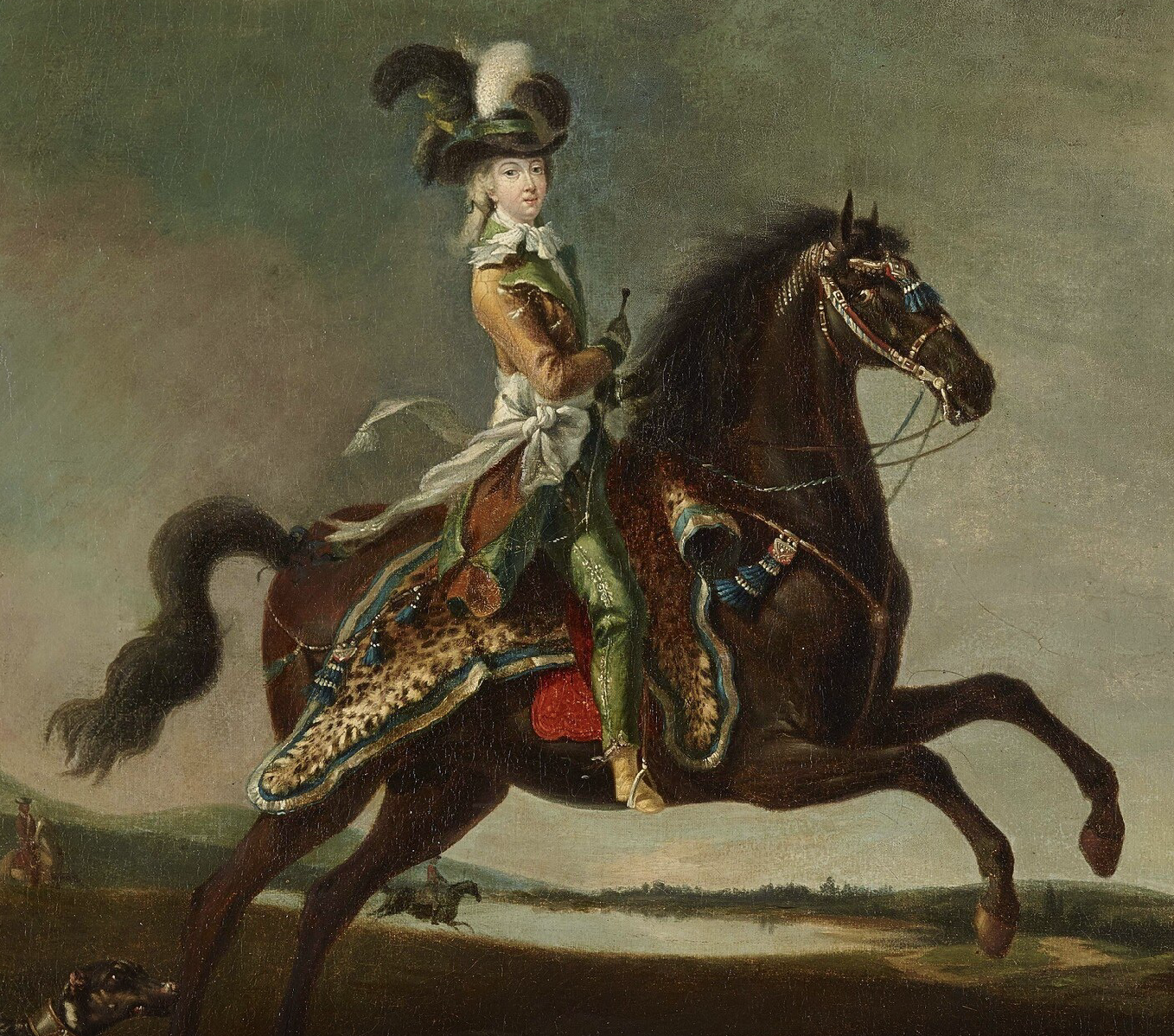
• CHAPTER 3. Innovations and Liberties
Following her interest into fashion during her reign, Marie Antoinette made Rose Bertin as the ‘Minister of Fashion’, who brought a freedom to court attire.
The robe ‘en gaulle’, or chemise à la reine sparked a mini revolution from 1781 onwards. It was a gown made of white cotton, gauze or silk for wearing in private spaces. It was straight with a very low cut and fastened with a belt around the waist.
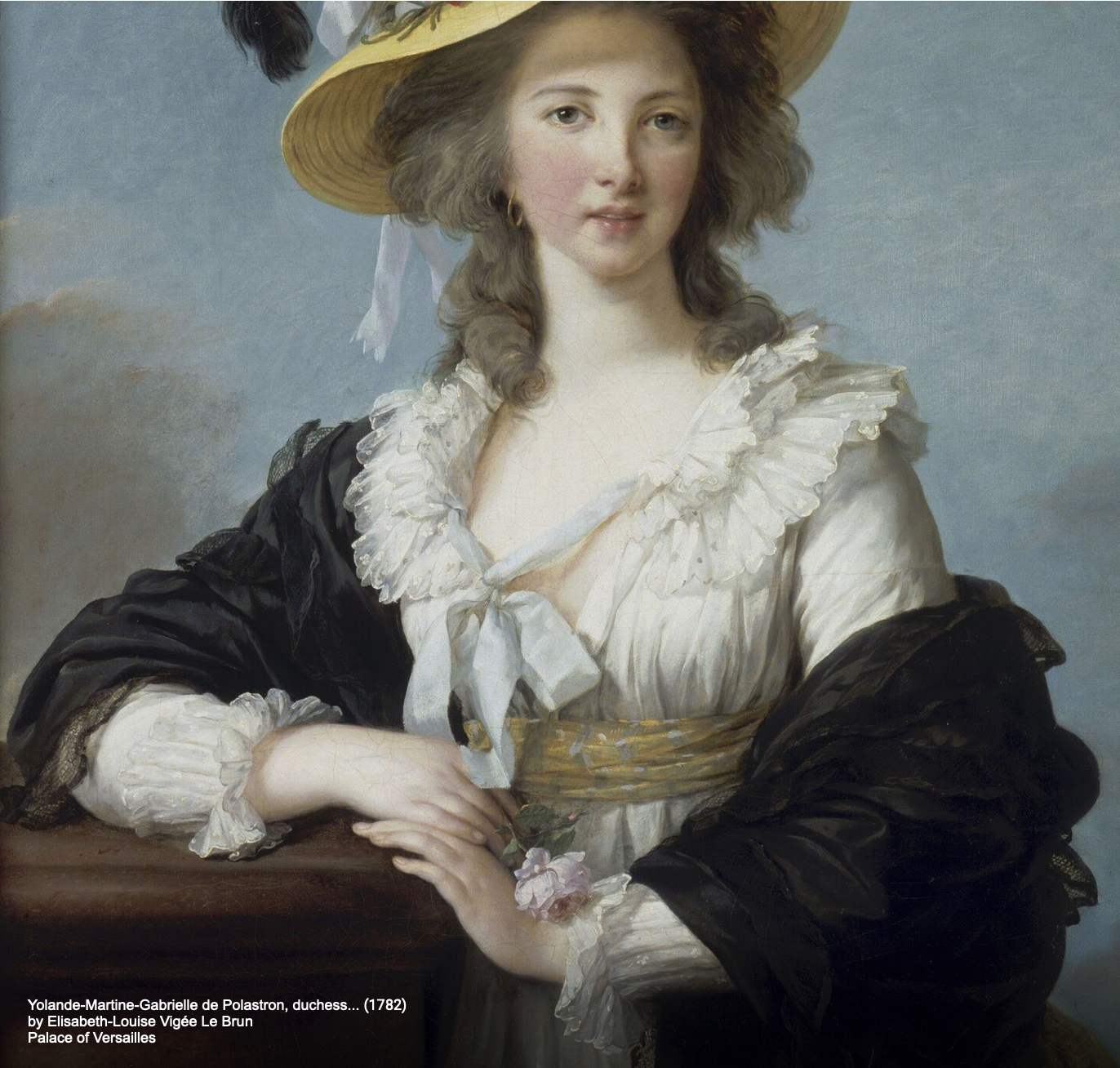
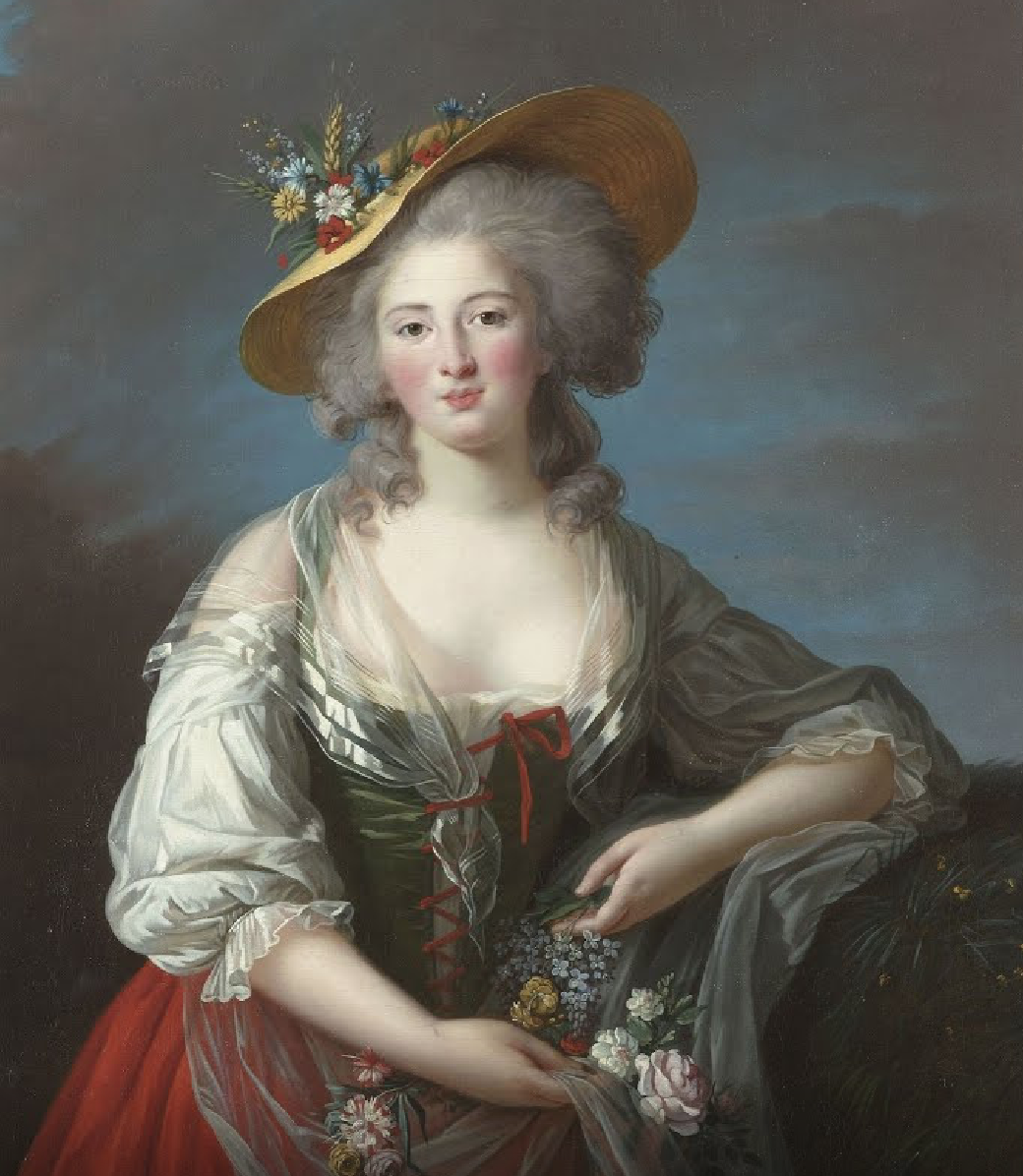
Bergère gown, was the attire worn by country women drawing upon the concept of a return to nature.During the trend of a return to nature, Madame Élisabeth was depicted in 1782 in an attractive jardinière gown with a broad-rimmed straw hat decorated with flowers and ears of corn. She is holding a bunch of freshly-picked flowers in her hands. She is wearing a green bodice laced over a white linen blouse and a plain skirt in red cotton. This gown follows the fashion of a return to nature which was hugely popular in the late 18th century, as demonstrated by the construction of Marie-Antoinette’s farm by Richard Mique between 1783 and 1786.
Robe à l’orientale, was a gown inspired by tales from travellers. It was made of white or ecru silk that was tightened at the chest.
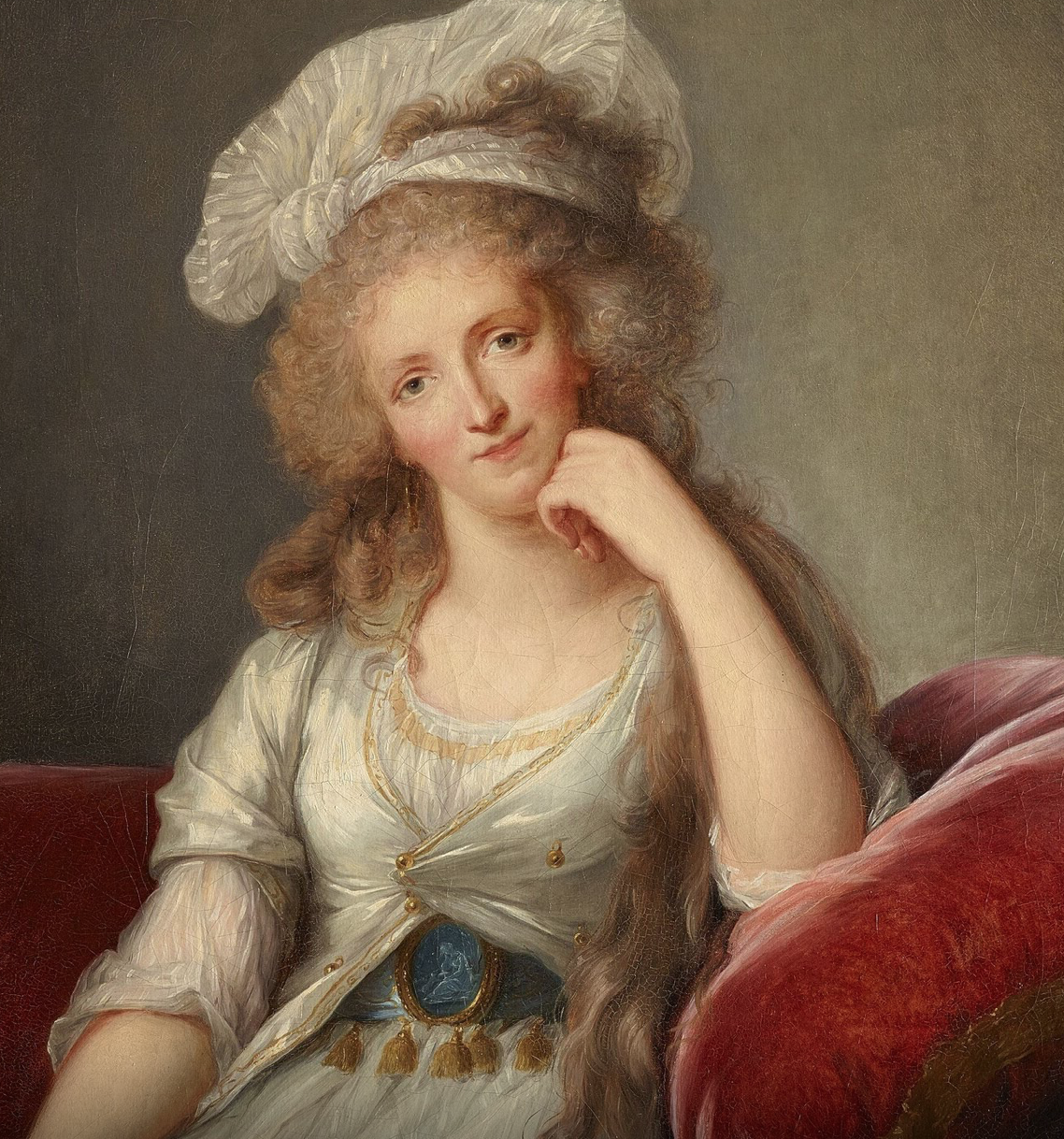
The English Fashion – the robe à l’anglaise, arouse following the rejection of paniers which were replaced by a tournure (frame that was padded using horse hair). The gown was inspired by the men’s redingote and it was made fairly versatile. Usually it was close fitting at the waist and it was worn both open the front and closed using metal buttons.
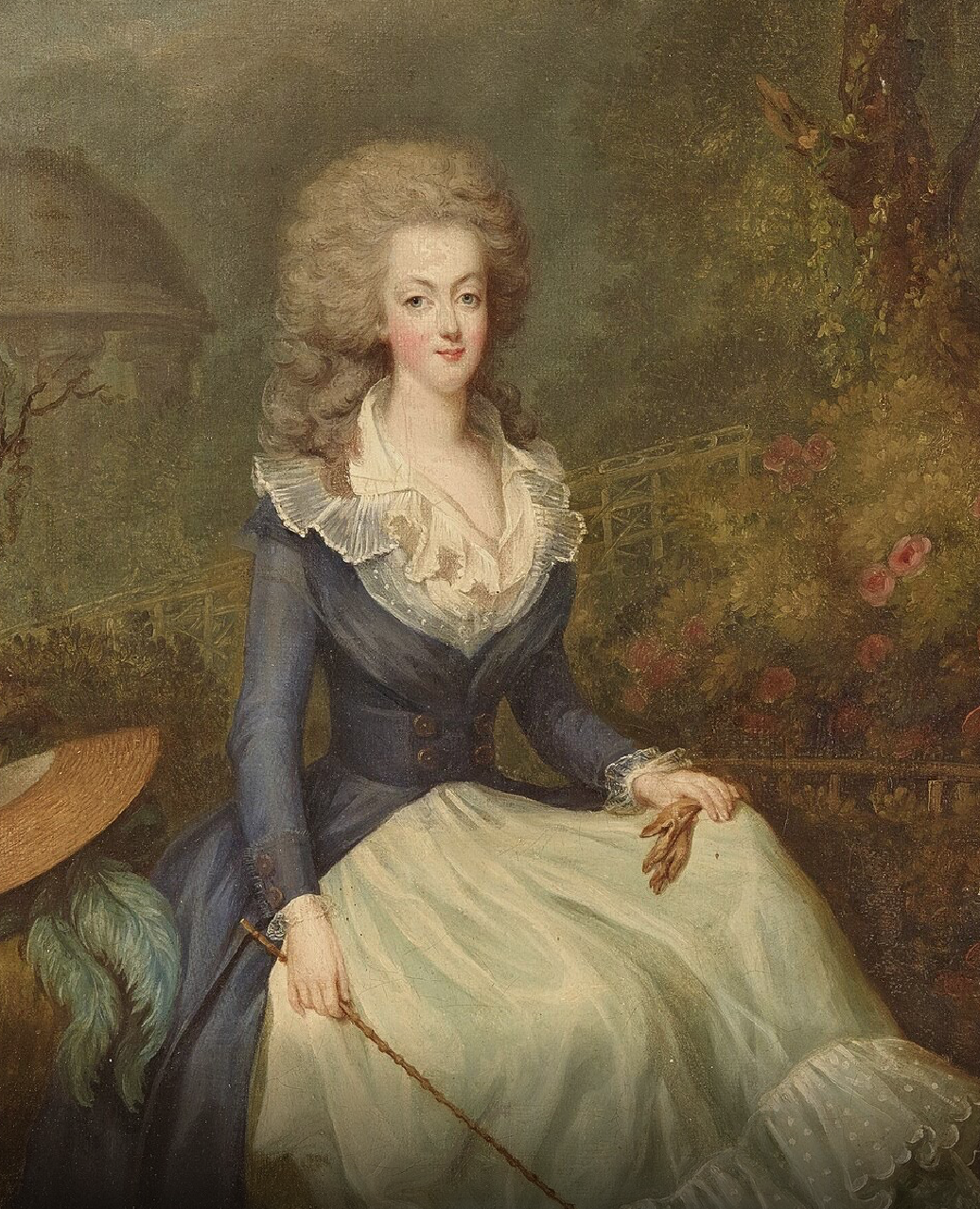
Source: https://artsandculture.google.com/exhibit/lwLSVueXWLR3Ig?hl=en-GB
